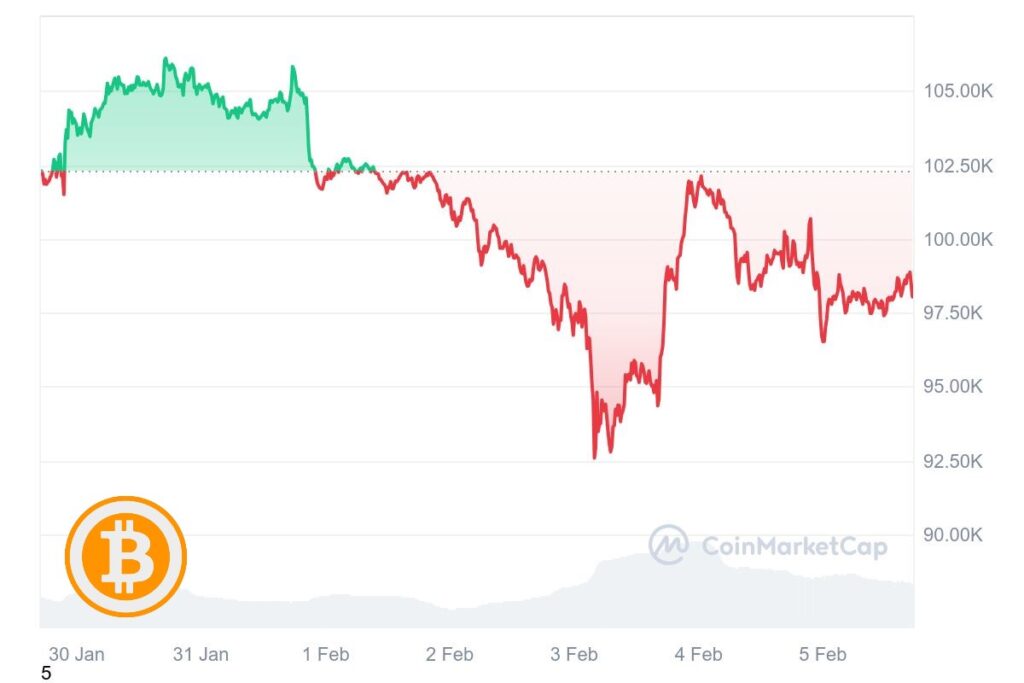In his first major press conference as the White House’s AI and Crypto Czar, David Sacks declared boldly: the U.S. government is no longer at war with digital assets. Instead, the Trump administration is shifting toward a structured approach on crypto regulation. Stablecoin legislation emerged as the cornerstone of its crypto strategy. While Sacks briefly acknowledged discussions surrounding a potential Bitcoin reserve when questioned, his primary focus was clear. He wants to foster an environment where digital asset firms can thrive within a stable regulatory framework.
This policy shift marks a significant departure from previous administrations, which took a more adversarial stance toward the crypto industry. This new administration moves toward regulatory clarity, but the question remains: will these changes provide the stability that crypto firms and investors have long demanded? Or, will skepticism from traditional finance and regulatory complexities create roadblocks?
A New Era for U.S. Crypto Regulation?
The crux of Sacks’ vision lies in regulatory clarity. For years, crypto firms have grappled with inconsistent enforcement actions and a lack of clear federal guidelines. Many companies ventured overseas seeking friendlier regulatory environments. Sacks’ announcement signals a shift in strategy. It acknowledges digital assets as a legitimate component of the financial ecosystem rather than a regulatory nuisance.
At the heart of this initiative is the push for stablecoin legislation, aimed at reinforcing the U.S. dollar’s dominance in the global financial system. By introducing a clear legal framework for stablecoins, the administration seeks to encourage their responsible issuance and use. They might even require issuers to back their tokens with U.S. Treasury assets. Proponents argue that such regulations would provide stability to the crypto industry and solidify the dollar’s role in digital finance, preventing other nations from filling the void.
Broader Elements of the Crypto Policy Plan
Beyond stablecoin legislation, Sacks outlined several key initiatives to position the U.S. as a global leader in digital assets. These include:
- A Market Structure Overhaul: The administration plans to streamline the classification of digital assets. Such classifications should be consistent across federal agencies such as the SEC and CFTC. The goal is to eliminate regulatory uncertainty and provide clear guidelines on what constitutes a security versus a commodity.
- DeFi and Innovation Safeguards: Recognizing the rapid growth of decentralized finance (DeFi), Sacks acknowledged the need for policies. They must promote innovation while addressing security risks such as fraud and illicit finance.
- Institutional Access to Crypto Markets: The administration is looking into easing restrictions that prevent traditional financial institutions from fully participating in crypto markets, which could pave the way for wider institutional adoption.
- U.S. Leadership in Global Crypto Policy: The administration plans to work with international regulatory bodies to create cooperative frameworks that ensure the U.S. remains competitive in shaping the future of global digital finance.
Industry Reactions: Optimism Meets Caution
The crypto industry has largely welcomed the Trump administration’s pivot. Industry leaders see this as an overdue recognition that digital assets are here to stay. Hence, regulation, rather than enforcement crackdowns, is the way forward. Several major firms have already indicated their willingness to work with regulators to shape policies that foster innovation without stifling growth.
However, not everyone is convinced. Critics from within and outside the crypto space caution that while regulatory clarity is needed, overly rigid or restrictive policies could stifle innovation. Some fear that requiring stablecoin issuers to maintain full reserves in government-backed assets could limit flexibility. Consequently, smaller players might not be able to compete with traditional financial institutions.
Additionally, some in traditional finance remain skeptical. Many banks and institutional investors historically viewed crypto as a speculative asset class. They are still wary of the risks involved in integrating digital assets into mainstream finance. Questions remain about whether stablecoin legislation will lead to increased government oversight of decentralized finance (DeFi) and whether regulatory measures will inadvertently centralize control over stablecoin issuance.
Challenges Ahead: Regulatory Hurdles and Market Reactions
While the administration’s intentions may be clear, implementing these policies poses significant challenges. The legislative process is complex, requiring bipartisan support in a political climate where digital assets remain a contentious issue. Policymakers will need to balance consumer protection, financial stability, and industry innovation. This is a difficult task given the rapid pace of technological advancements in the crypto sector.
Moreover, the immediate market reaction to Sacks’ announcement reflected some of these concerns. Following the press conference, Bitcoin and other major cryptocurrencies saw a dip, indicating that investors remain uncertain about how these policies will play out in practice. Some analysts attribute this to profit-taking after recent rallies. Others suggest that concerns about government intervention and regulatory control have dampened enthusiasm.

What’s Next?
Sacks’ declaration marks a pivotal moment for the U.S. crypto industry. However, the real test lies in the administration’s ability to turn rhetoric into actionable policy. Stablecoin legislation will be a key battlefront. Industry players, regulators, and lawmakers are negotiating the terms of what could become the first major piece of federal crypto legislation.
If successful, these policies could bring the stability and legitimacy that digital assets need to thrive in the U.S. market. However, if mismanaged, they could lead to further uncertainty, driving innovation offshore and reinforcing the very challenges the administration seeks to resolve.
For now, the crypto industry is watching closely, hoping that this shift from ‘persecution’ to regulation is more than just political posturing. The future of digital assets in the U.S. depends on how well this vision translates into reality.
Readers’ frequently asked questions
What is a stablecoin, and why does the U.S. government want to regulate it?
A stablecoin is a cryptocurrency that maintains a stable value by pegging it to a reserve asset, such as the U.S. dollar, or a commodity like gold. Unlike Bitcoin or Ethereum, which can experience high volatility, stablecoins provide a more predictable value, which is useful for payments, savings, and trading in the crypto space.
The U.S. government wants to regulate stablecoins to ensure issuers back them properly by reserves and to prevent risks to the financial system. Without regulations, there is a concern that some stablecoins might not be fully backed, leading to potential collapses affecting users and businesses. The proposed regulations would require stablecoin issuers to hold reserves in safe assets, such as U.S. Treasury securities, making them more secure and reliable.
How would new crypto regulations affect me if I just buy and hold Bitcoin or other cryptocurrencies?
If you simply buy and hold Bitcoin or other cryptocurrencies for investment, the proposed regulations will likely have little direct impact on you. However, they could influence how crypto exchanges operate, how stablecoins function in the market, and how financial institutions interact with digital assets.
For example, if new regulations make stablecoins more widely accepted by banks and businesses, it could lead to greater adoption of cryptocurrencies overall. On the other hand, if regulations impose strict controls on crypto transactions, some platforms might limit services or require additional compliance measures, such as identity verification. This could affect how easily you can trade, convert, or use your crypto holdings in the future.
What is the difference between a security and a commodity in crypto, and why does it matter?
In the U.S., financial assets are categorized as either securities or commodities. The classification determines which laws and regulatory agencies apply.
- A security is an asset that represents an investment in a company or project, where profits depend on the efforts of a third party. Stocks, bonds, and certain tokens that fund projects could be considered securities. Securities are regulated by the Securities and Exchange Commission (SEC).
- A commodity is an asset that can be traded like a raw material or currency, without depending on a central entity. Bitcoin is generally considered a commodity and is regulated by the Commodity Futures Trading Commission (CFTC).
This distinction matters because if a cryptocurrency is classified as a security, it must follow stricter regulations, including registration requirements, disclosures, and investor protections. If it’s classified as a commodity, it faces fewer restrictions and you can trade it more freely. The U.S. government is working to create clearer rules to classify different digital assets so that businesses and investors know which laws apply.
What Is In It For You? Action Items You Might Want to Consider
Monitor Stablecoin Regulation Developments – It Could Impact Your Trading Strategy
With the U.S. government prioritizing stablecoin legislation, expect potential changes in liquidity, exchange policies, and DeFi integrations. If you rely on stablecoins for trading or holding funds, keep an eye on new regulatory requirements. Some stablecoins might face stricter reserve backing rules, which could affect their availability and transaction costs. Consider diversifying your stablecoin holdings to mitigate any sudden regulatory impacts.
Stay Alert to Market Reactions – Volatility Could Present Trading Opportunities
Bitcoin and altcoins dipped following Sacks’ press conference, indicating market uncertainty over regulatory changes. If similar events unfold, sharp price movements could create both risks and opportunities. Set alerts for key announcements related to crypto regulations. Prepare an entry or exit strategy. Short-term traders might capitalize on price swings, while long-term holders should evaluate whether new regulations support institutional adoption and long-term stability.
Reassess Your Portfolio – Regulatory Clarity Could Shift Market Dynamics
With the U.S. moving toward clearer crypto regulations, institutional investors may feel more confident entering the space. This could lead to stronger growth in regulated assets like Bitcoin and Ethereum. More speculative altcoins could face challenges if they are deemed securities. Take a fresh look at your portfolio. Does it balance exposure to assets that could benefit from increased regulation with those that might struggle? Adjust accordingly based on your risk tolerance and market outlook.











[…] >>> Read more: Crypto Regulation: A Shift in the US Government’s Approach […]